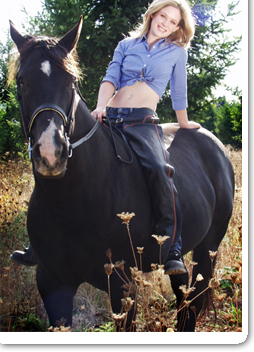Punishment is the use of an adverse stimulus on your dog in order to reduce the probability of problematic behavior recurring in the future. The general belief among dog trainers and owners is that punishment is only marginally effective in dog training due to the time gap between behavior and reinforcement. An example of punishment might be, you coming home to find some shredded paper on the floor. You angrily proceed to drag your dog to the mess and both verbally and physically reprimand him or her for the mess. Your dog will almost certainly be afraid of your actions and may show subordinate behavior or even aggression as a result of the forceful nature of the punishment. However your dog may not make the mental association between the wrong act and the punishment.
This is because the timing between events often makes it extremely difficult for your dog to make the connection. As a rule I suggest that punishment should be avoided whenever possible. Those who have used punishment as a training tool often say it rarely works out, admitting that the technique may not teach the dog anything and may very well cause conflict in the relationship between the dog and its owner. There are a number of innovative albeit unusual ways of bringing your dog in line but for them to work, the first thing you need to remember is. Your dog is not human.
Unless you believe in pet psychics, there is really no way for you to read your dog's mind and figure out exactly what he or she is thinking. The good news is that, like many dog owners, the problems you're having can probably be traced to one simple thing: you're trying to communicate with your dog from a human standpoint, and your dog isn't a human. Sure, you know that, but lots of humans try to relate with their dogs in the ways that they think are rational as humans. The problem is that dogs are driven in every act and every moment by very strong instincts.
Deciphering those instincts and leveraging them to build a productive relationship is like finding the keys to the city. The second thing to remember is that your dog doesn't speak English. Take the word no, for example.
Does your dog speak English? No! Neither does she understand English. What is meaningful to her is your tone of voice, not the word itself. Now let us think about that for a moment. We are taking up excess time trying to teach our dog a word she will never speak and that probably does not mean much to her anyway. Sure, it is meaningful to us, but that is only one side of the equation. What about something that is meaningful to both humans and dog? You know what a growl means, and your dog knows what a growl means.
If you think that mutually meaningful language does not exist, you are not thinking creatively enough. What does it say to you when a dog growls at you? Anything from get away from my food to back off, right? Yet in every case, a dog's growl typically means that she is not happy with whatever you have done. And you have seen dogs react to other dogs growls? So you know what a growl means, and your dog knows what a growl means. The answer? Growl at your dog! No, seriously! The next time your dog starts stepping outside her bounds or doing something you do not like, growl at her.
A nice, strong, guttural growl that would put the alpha wolf in a pack to shame. While you are growling, look directly into her eyes. You are almost guaranteed that she will back off. This works because instincts save time and communicate effectively. You worked with your dog's instincts and the information hardwired into her brain. The result was instantaneous.
Why spend tons of time trying to work against that instinct and end up frustrated, angry, and still miscommunications? This approach works in everything from basic discipline to full-on obedience training. You just need to figure out how to apply it in each of those situations.
Jessica Baker is an avid dog lover and trainer, and one of the co-founders of http://www.Dogsology.com where they share vital but easy to apply information on every aspect of dog care from dog training through to dog health and dog grooming...
